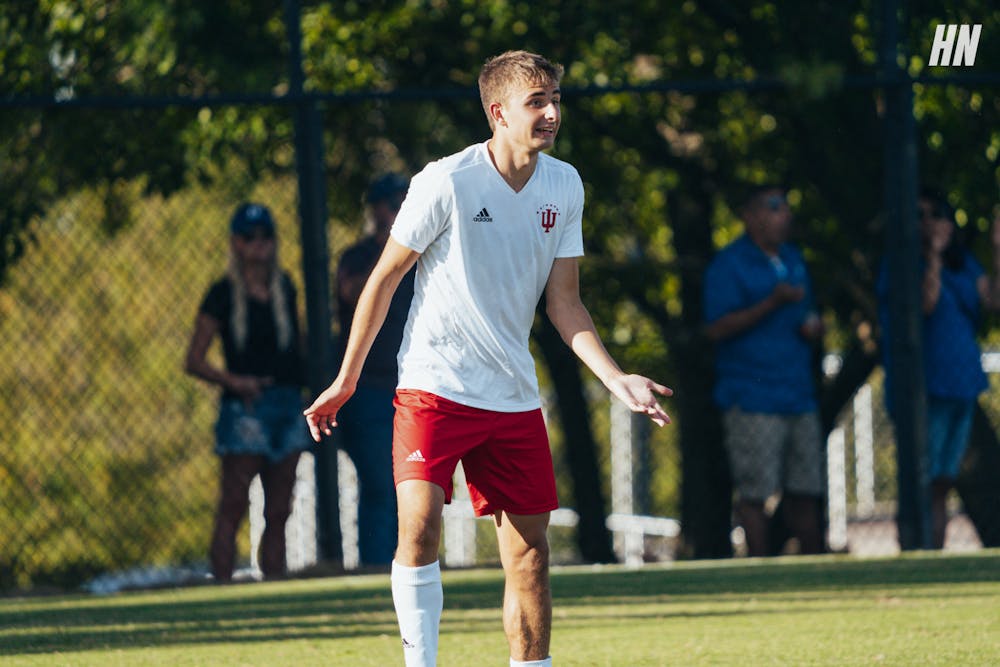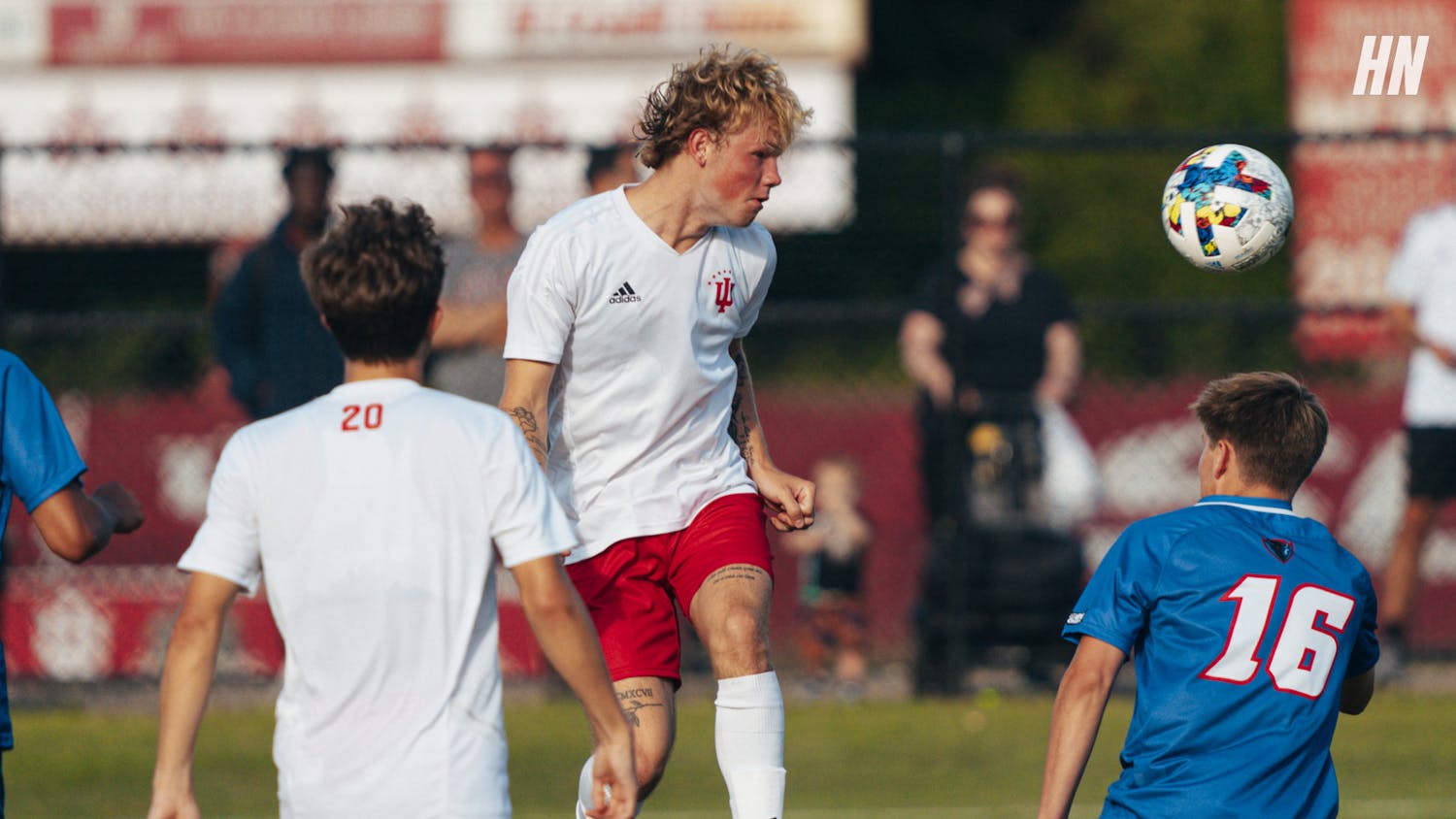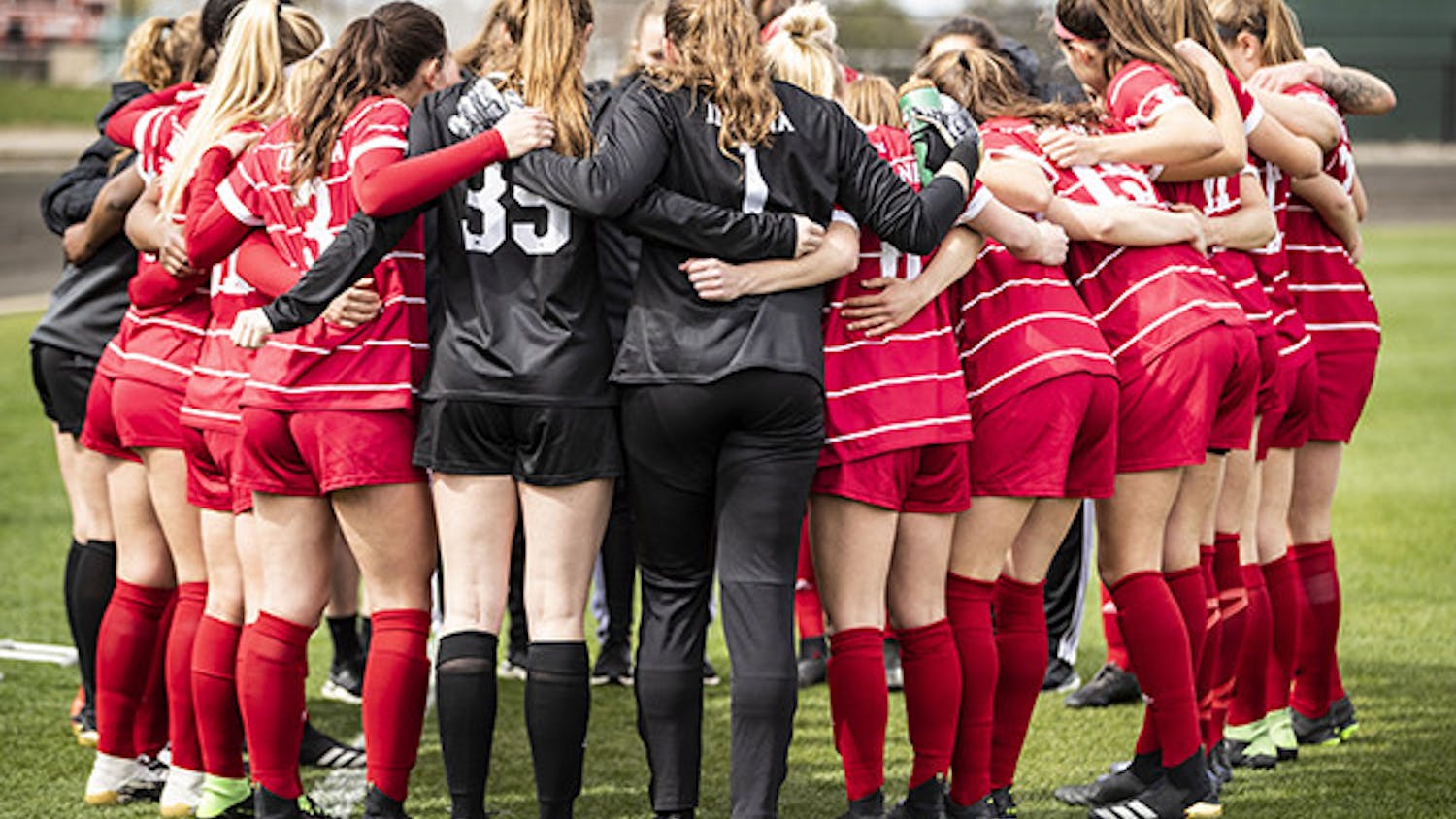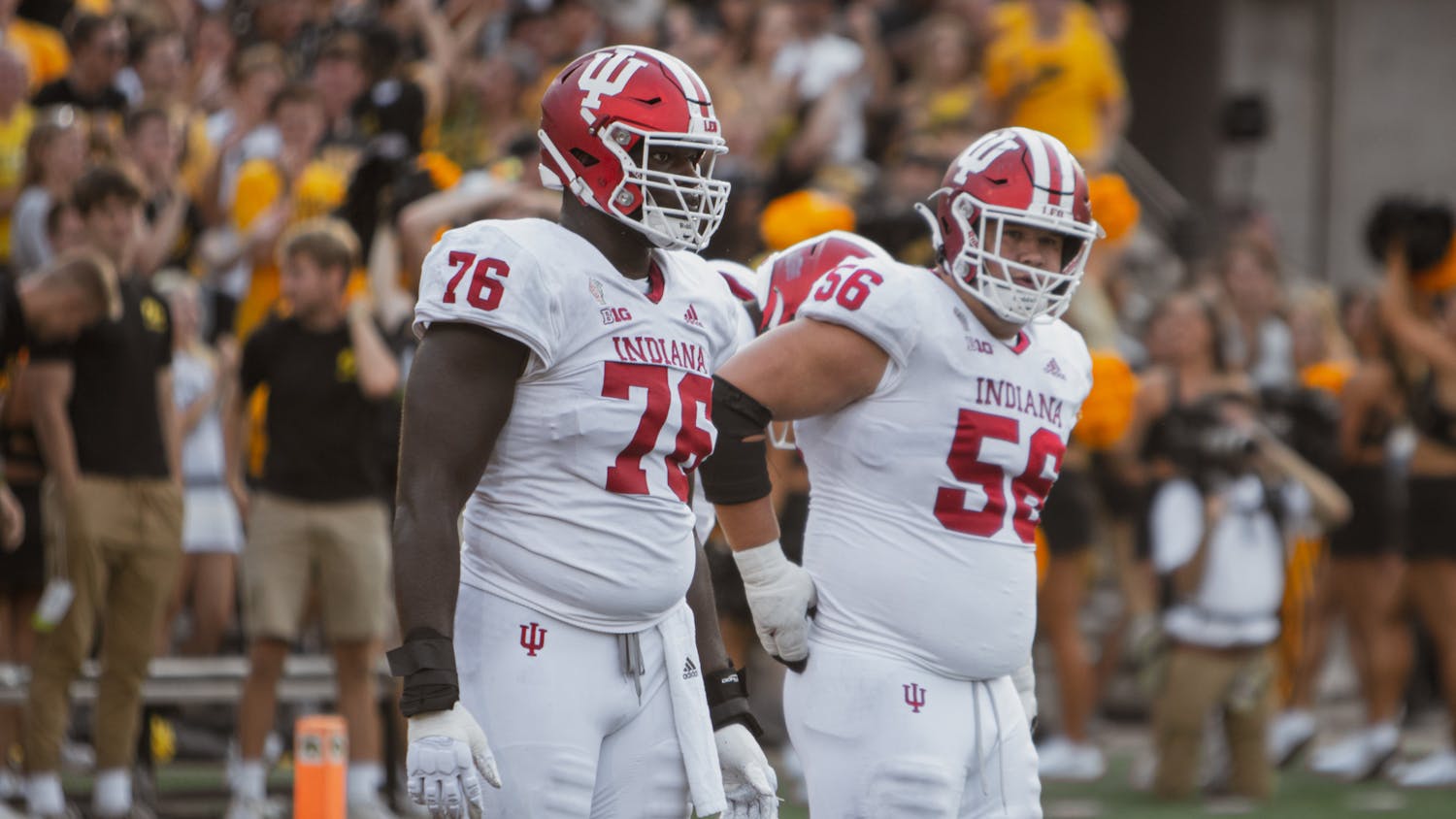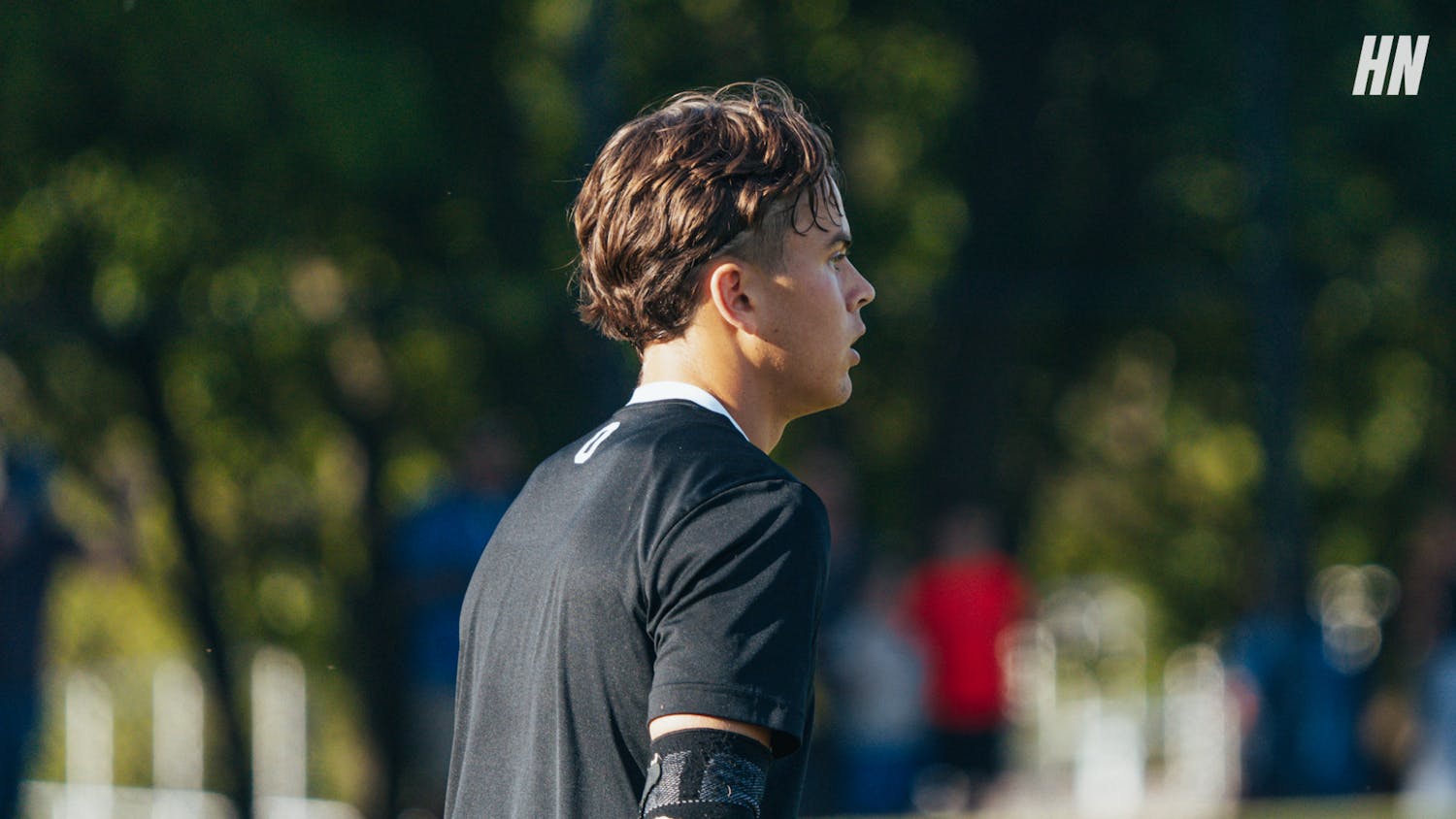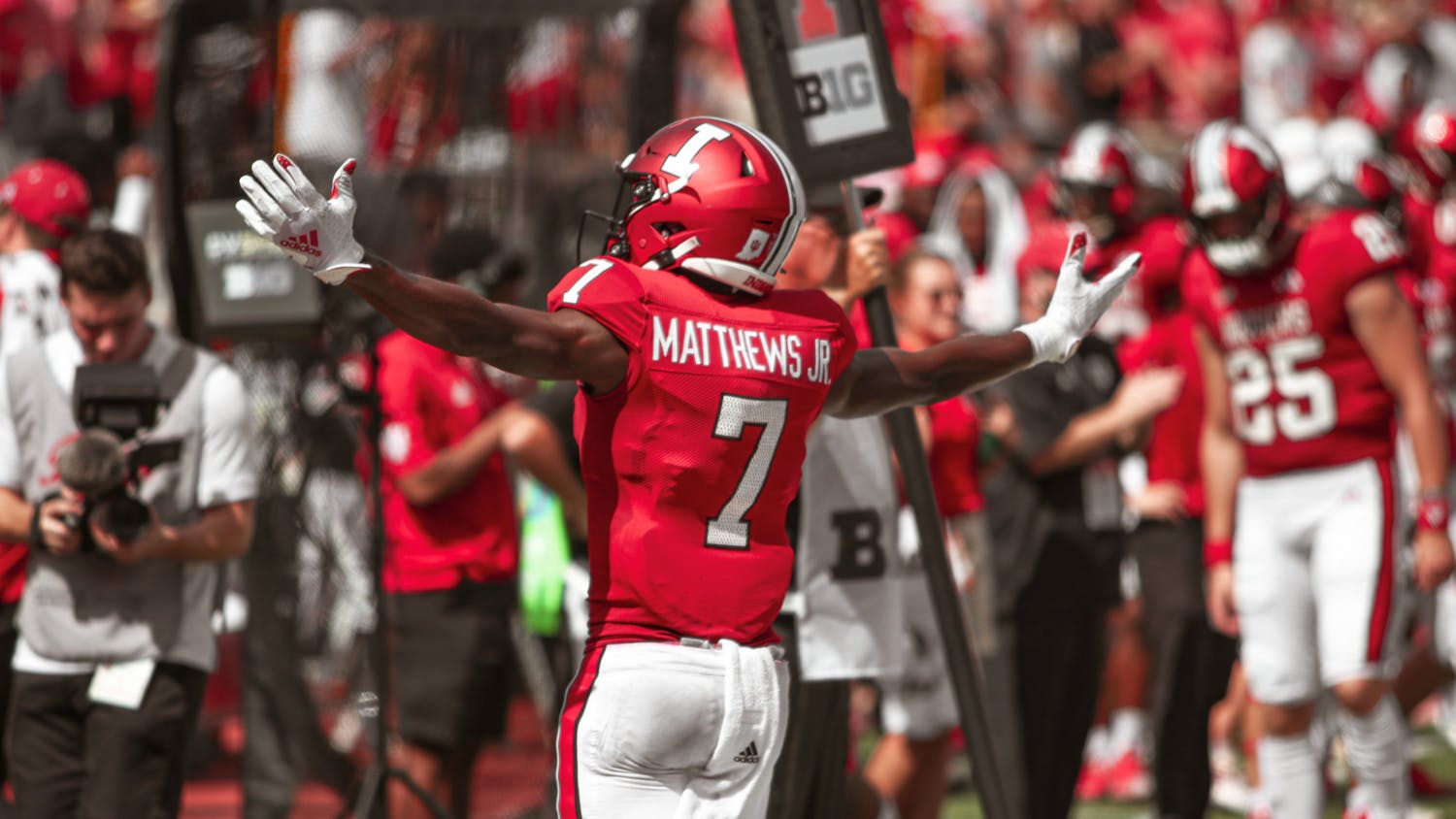Synchronous clapping and shouting echoed throughout the Indiana men's soccer Practice Field. Left-center back Joey Maher praised his right-side companion, Nyk Sessock, for repelling another DePaul attack.
Maher's hollering from the other side of the 18-yard box functioned like an inspirational war cry. During the first two 30-minute periods in the exhibition match — which Indiana won, 2-1 — the Blue Demons continually approached Indiana's net with an equal ratio of attackers to defenders — but came up empty.
In years past, the Hoosiers typically played four defenders in the back — seen in their 2020-21 postseason run to the national championship game. Yet on Friday, Indiana opted for the versatile 3-4-3 formation, at the expense of an additional defender on the backline. One drawback of this formation is defenders potentially encounter one-on-one matchups against aggressive opponents. So, the slightly tense scramble to fend off incoming attacks could be expected.
Then why the change, you might ask? Well, it's simple. Head coach Todd Yeagley's trust in experienced defenders. Sessock and Maher, with Daniel Munie in the middle, each performed successful tackles during threatening two-on-two charges. Aside from one or two shots on goal, the upperclassman starting trio helped halt each opposing attack in the first 60 minutes.
"We don't want to leave [opposing forwards] on an island and go three for three all day, but we feel like we can handle one-on-one battles with 60 yards behind," Yeagley said following the victory.
Directly behind the trio stood junior goalkeeper and Duke transfer JT Harms. Early in the match, Harms accidentally kicked the ball to an opposing forward outside the box. If not for Munie wisely running to guard the net, DePaul could have responded quickly with the equalizer. But despite the slight miscue, Harms performed well in goal and later ranged to his right for a diving save.
"Usually, those types of snafus aren't the case with JT, so I'm not worried about that," Yeagley said. "I thought he was connected to our backline, made a couple (of) good decisions coming out on their through balls to relieve pressure."

Harms, Maher, Munie and Sessock collectively played together for no more than 60 minutes on the pitch. Harms yelled "home" to the backline for that entire duration — constantly giving an extra option in case they needed to retreat — helping retain possession.
When the roster card turned over halfway through the match, senior keeper Bryant Pratt replaced Harms. On the backline, senior Brett Bebej and junior Xavier transfer Jansen Miller substituted for Maher and Munie, respectively. Yeagley commented on Miller's impressive aerial presence at center back — useful against large opponents. And with the athleticism of all defenders mentioned above, Yeagley said he believes the back three can hold firm.
"It's not a system you'd want with young players unless they're super special," Yeagley said. "That's where this all comes to this point — where we think we have the rotation, the players to do it."
Indiana shifting to the 3-4-3 maximizes efficiency. If the Hoosiers possess a strong enough backline, moving one defender spot for an extra wingback (or sideline midfielder) creates better attacking width. Senior wingbacks Ryan Wittenbrink and Maouloune Goumballe made several runs down the sideline. And if the Hoosiers were ever tangled in a corner pocket of the field, they lofted it to the far wingback at their leisure to open up spacing.
Yeagley disclosed build-up play must improve. But there's still time for that. This was only Indiana's first exhibition match — training started Wednesday. Sure, the Hoosiers could experiment with a new formation in their second exhibition against Bowling Green on Tuesday night. However, it appears the 3-4-3 will become their identity, courtesy of the right blend of players stationed in the defensive third.
